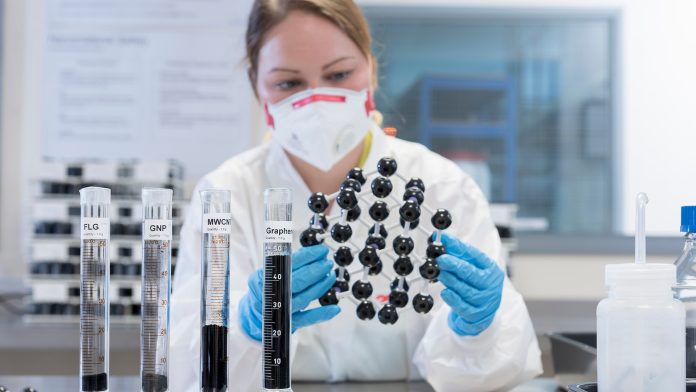New research has tested the safety implications of graphene, revealing that the ‘wonder’ material has the potential to be developed without risk to human health.
A study has shown that graphene safety in health is possible, with carefully controlled inhalation of a specific type of graphene shown to have no short-term adverse effects on cardiovascular function.
The first controlled exposure clinical trial in people was carried out using thin, ultra-pure graphene oxide.
Further work is needed to find out whether high doses of the water-compatible form of the material or other forms of graphene will have a different effect.
The team also wants to discover whether long exposure to graphene would impact human safety.
Professor Kostas Kostarelos, of the University of Manchester and the Catalan Institute of Nanoscience and Nanotechnology (ICN2) in Barcelona, said: “This is the first-ever controlled study involving healthy people to demonstrate that very pure forms of graphene oxide – of a specific size distribution and surface character – can be further developed in a way that would minimise the risk to human health.”
The study is published in the journal Nature Nanotechnology.
The importance of graphene
Interest in developing graphene has surged due to its status as a ‘wonder’ material.
First isolated by scientists in 2004, the material has many potential applications, such as electronics, phone screens, clothing, paints, and water purification.
Around the globe, graphene is being explored for its potential to assist with targeted therapeutics against cancer and other health conditions.
As well as this, it has the potential to be used as an implantable device or sensor.
Before medical use, however, graphene safety must be tested for any potential adverse effects.

Dr Mark Miller, of the University of Edinburgh’s Centre for Cardiovascular Science, said: “Nanomaterials such as graphene hold such great promise, but we must ensure they are manufactured in a way that is safe before they can be used more widely in our lives.
“Being able to explore the safety of this unique material in human volunteers is a huge step forward in our understanding of how graphene could affect the body. With careful design we can safely make the most of nanotechnology.”
Clinical monitoring of graphene safety
Researchers from the Universities of Edinburgh and Manchester recruited 14 volunteers to take part in the study.
The volunteers breathed the material through a face mask for two hours while cycling in a purpose-designed mobile exposure chamber brought to Edinburgh from the National Public Health Institute in the Netherlands.
The team measured the effects of lung function, blood pressure, blood clotting, and inflammation in the blood before the exposure and at two-hour intervals.
The volunteers then returned to the clinic a few weeks later for repeated controlled exposures to a different size of graphene oxide or clean air for comparison.
The observed safety of graphene suggested that there were no adverse effects on lung function, blood pressure, or most of the other biological parameters analysed.
The team noticed a slight suggestion that inhalation of the material may influence the way the blood clots, but this effect was very small.
Professor Bryan Williams, Chief Scientific and Medical Officer at the British Heart Foundation, said: “The discovery that this type of graphene can be developed safely, with minimal short term side effects, could open the door to the development of new devices, treatment innovations and monitoring techniques.
“We look forward to seeing larger studies over a longer timeframe to better understand how we can safely use nanomaterials like graphene to make leaps in delivering lifesaving drugs to patients.”







